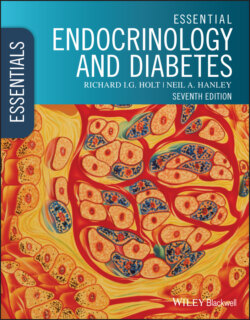Читать книгу Essential Endocrinology and Diabetes - Richard I. G. Holt - Страница 27
Positive feedback
ОглавлениеUnder certain more unusual circumstances, hormone feedback enhances, rather than inhibits, the initial response. This is called positive feedback (illustrated alongside the more usual negative feedback by the plus sign in Figure 1.4a). This is intrinsically unstable and always has built‐in self‐limiting features. Transiently, it can be beneficial. For instance, the action of oestrogen on the pituitary gland induces the ovulatory surge of LH and FSH, further stimulating oestrogen production in the developing follicle (Chapter 7). During childbirth, stretch receptors and nerves from the distended vagina stimulate the posterior pituitary to release oxytocin. The rise in oxytocin causes more uterine contraction, further activating the stretch receptors. The role of oxytocin in the suckling–milk ejection reflex is similar. In each instance, the positive feedback amplifies a signal until there is a break in the circuit, either ovulation, birth of the baby or the cessation of suckling.
Figure 1.4 Control systems regulating hormone production and circulating levels. (a) The endocrine organ releases a hormone, which acts on the target tissue to stimulate a response. The response usually feeds back to inhibit () the endocrine organ and decrease further supply of the hormone. Occasionally, the feedback can act to enhance the hormone secretion (, positive feedback). (b) In this slightly more complex scenario, the endocrine organ produces hormone 1, which acts on a second endocrine gland to release hormone 2. In turn, hormone 2 acts dually on the target tissue to induce the response and feeds back negatively onto the original endocrine organ to inhibit further release of hormone 1. This model is illustrative of the axes between the anterior pituitary and the peripheral end‐organ targets.
